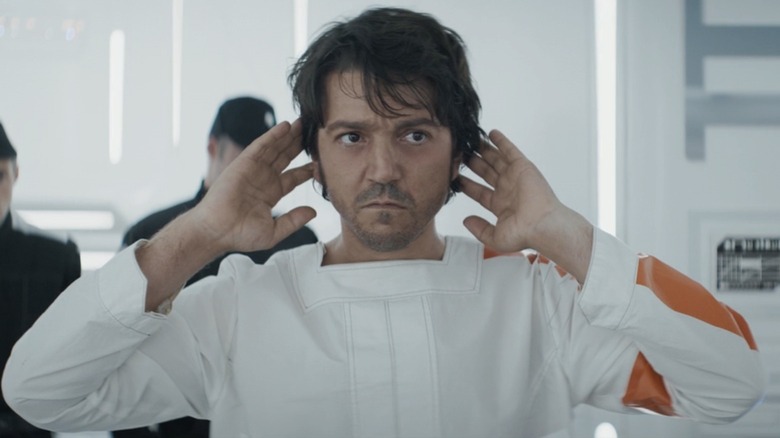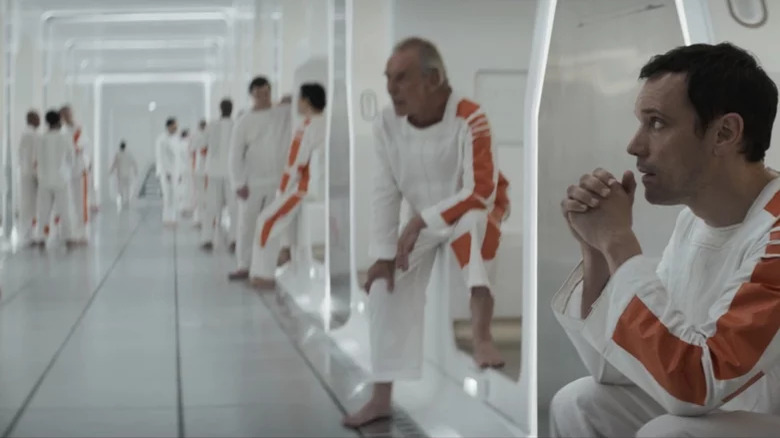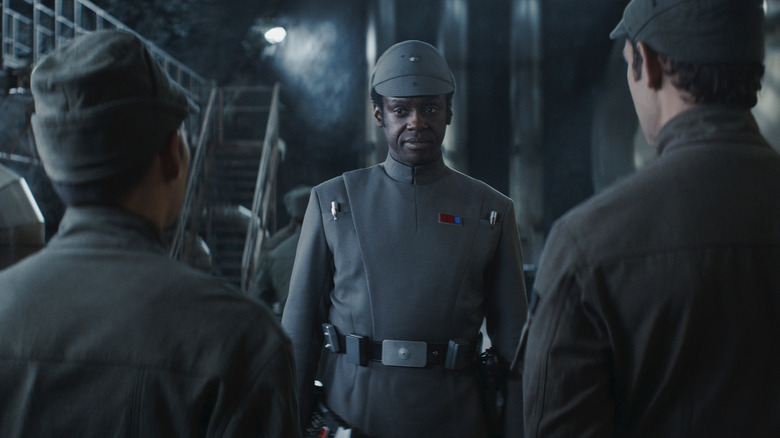Andor Finally Shows How Truly Evil Star Wars' Empire Is
When it comes to "Star Wars," we see plenty of the battle between good and evil, whether it's dogfights in space or lightsaber battles in moon-sized space stations. But we rarely get to see how the war actually impacts common people, at least not in live-action.The Clone Wars that drive the prequel trilogy really only start in the last 10 minutes of "Attack of the Clones" and was mostly over by the start of "Revenge of the Sith." Meanwhile, the Galactic Civil War of the original trilogy does feature an alliance of rebels fighting against an evil empire, but much of their day-to-day evil deeds go unseen.
Granted, we do see the Empire blow up an entire planet just for a demonstration of power, but that was a sort of sick punishment to Princess Leia. Plus, the murder and burning of Uncle Owen and Aunt Beru was more a strike of circumstance while looking for the Death Star plans, and that inadvertently drove our fated hero on the quest that would ultimately bring down the Empire. As for the common citizens of the galaxy? We only hear from the rebels that the Empire sucks and life is tough, but we never really got to see it outside of the battles of "Star Wars."
This is changing with "Andor," a show that is giving us a much needed breath of fresh air and changing much of what we think of "Star Wars." Much like how "Rogue One" gave us a fantastic, grounded, thrilling movie without the need for lightsabers, "Andor" giving us a look at how the Empire is so evil the only moral thing to do is resist and fight.
An empire of torture
It's easy to just show a parade of Stormtroopers walking around town and call it a day, or show a towering villain in a cybernetic suit choking people with the Force in a display of evil. But "Andor" focuses on how the Empire's oppression impacts whole communities.
Take what is probably the biggest demonstration of cruelty and excessive use of force in the show so far: the Narkina 5 prison facility. In reality, the prison is more of a '70s dystopian death game facility where the floors get electrified at a push of a button, where sleepwalkers or anyone wanting to take a midnight stroll get greeted by a floor that is pretty much lava. The prisoners spend 12 hours a day working on building who knows what, competing against each other in a sick game where the winners get slightly better-tasting food paste, and the losers are electrocuted. This is a setting so dark and bleak that it gives us the first suicide in live-action "Star Wars" history.
It's not just the overblown sentences and the sadistic prison that sell the idea of the Empire being evil, it's how it affects every person no matter their status in galactic society. We see how the people on Ferrix have grown so used to living in fear that they have a system in place to protect one another from Imperial officials by way of space hootie hoo. More than any other "Star Wars" show, "Andor" is clearly illustrating how life is changing under Imperial control, from private security companies governing planetary systems to the Empire's disrespect of other cultures.
An empire of mundane bureaucracy
One thing that makes "Andor" special is that it knows you need both grand gestures and small details to sell an idea. A sadistic prison system works to make us feel the Empire is evil, yes, but so does something as simple as bureaucratic investigations, learning that six-month sentences now last six years, or the sight of a single TIE Fighter doing a routine fly-by at the worst possible moment.
"Andor" is about the origin of the Rebel Alliance, the organized resistance that bands together to destroy not one but two Death Stars in an open war against the Empire a few years down the line. What makes the show so impressive and memorable, however, is that it's finally, truly selling us on the idea that people are so desperate that they'd be willing to rise up.
For most of the original trilogy, the Empire was intimidating mostly because of iconography, from its cold, geometrical architecture to the clearly fascist wardrobes and symbols. And we can't forget about their decrepit and mysterious leader, Emperor Palpatine, and his giant cyborg enforcer with a laser sword. We hear a lot of characters talking about the threat of the Empire, and we have that line about Palpatine dissolving the senate (an unnecessary act since he already was the senate), but we had never really seen how the Empire was subjugating the common people — until now.
"Andor" is streaming on Disney+.


